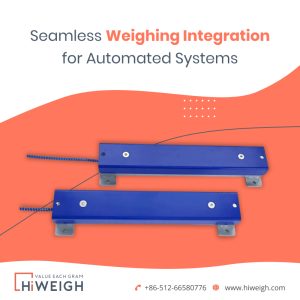In the world of industrial automation, which is always changing, the addition of weighing indicators is very important to achieve high efficiency, precision, and process optimization. These complex instruments have a big part to play in controlling and watching over how heavy materials are during different automatic processes. This ensures smooth operation across many industries. In this blog post, we will discuss why it’s so crucial to integrate weighing indicators into automated systems. We explore what they do, their advantages, and how much change they bring about within today’s manufacturing environment.



Weighing Indicators and Their Role
Before going into the integration part, it’s important to understand the basics of weighing indicators. A weighing indicator is a device that interprets and shows the weight measurements from load cells or other sensors used for weighing in diverse applications. It’s also sometimes called a weight indicator. This serves as an interface between user and system by showing real-time data and providing control options and connectivity possibilities to make interaction easier with your specific setup needs.
The Integration Process:
The process of adding weighing indicators to automated systems is about smoothly including these devices into current or fresh manufacturing setups. This includes thoughtful preparation, taking into account elements like compatibility, communication methods, data merging, and system size changeability. The key steps in the integration process are:
- System Analysis and Design:The first step involves conducting a thorough analysis of the automated system’s requirements and objectives. This includes identifying the specific tasks that require weight monitoring, determining the best placement for weighing indicators within the system, and outlining the desired functionalities and performance metrics.
- Weighing Indicator Selection: Once the system requirements are clear, the next step is to choose the appropriate weighing indicators to meet the needs of the application. Accuracy, precision, capacity, communication protocols (for example, RS-232, Modbus, and Ethernet), and compatibility with existing automation equipment are all important considerations during the selection process.
- Control System Integration:After selecting weighing indicators, they must be seamlessly integrated into the automated control system. This entails creating communication channels between the weighing indicators and other automation components, such as programming logic controllers (PLCs), SCADA (supervisory control and data acquisition) systems, or human-machine interfaces. Integration protocols such as Modbus TCP/IP and OPC-UA enable seamless data exchange and interoperability among system components.
- Calibration and Testing: Prior to deployment, the integrated system is rigorously calibrated and tested to ensure accuracy, reliability, and compliance with performance standards. To validate system functionality under a range of operating conditions, this entails conducting simulated operational tests, calibrating the weighing indicators, and confirming measurement accuracy across load ranges.
Benefits of Integration:
The combination of weighing indicators with automated systems brings many advantages that help in better operational efficiency, productivity, and quality control.
- Monitoring and Control in Real Time: Including weighing indicators gives operators an instant view of weight measurements together with process parameters, letting them make timely interventions and adjustments to keep production conditions at their best level.
- Better Accuracy and Uniformity: Automated weight monitoring removes the possibility of mistakes and differences linked with human involvement, ensuring exact and uniform measurement outcomes through different production periods.
- Better Process Optimisation: Weighing indicators help in making decisions based on data by giving useful understanding about the use of materials, the uniformity of batches, and how well production is going. This helps to continuously improve processes and make better use of resources, which leads to overall operational excellence.
- Easy Connection with Business Systems: Weighing systems that are integrated can connect and exchange information with enterprise resource planning (ERP) systems, software for managing inventory, as well as quality control systems. This allows smooth tracking of items, handling inventory, and following rules set by authorities.
- Scalability and Flexibility:The integrated weighing systems are designed with a modular and scalable architecture that can adjust to changing production needs. This means they can handle alterations in throughput, variety of products, and setup of processes while causing the least disturbance possible.
Conclusion
The inclusion of weighing indicators in automated systems is a game changer for contemporary manufacturing. It fundamentally changes how weight measurement and control become part of industrial processes, using cutting-edge technologies and smart automation to bring about increased efficiency, accuracy, and flexibility. This helps drive sustainable growth and a competitive edge in the modern market setup, where change happens rapidly. As sectors progressively adopt digital alteration and Industry 4.0 ideas, the smooth incorporation of weighing indicators will keep on being crucial in determining the forthcoming manufacturing brilliance.
In essence, the integration of weighing indicators into automated systems not only streamlines operations but also lays the foundation for smarter, more adaptive manufacturing ecosystems poised for success in the digital age.
